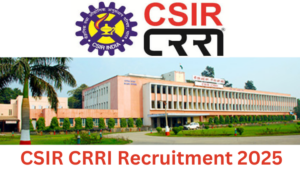Q1. Which one among the following nutrients is a structural component of the cell wall of plants?
(a) Manganese
(b) Potassium
(c) Phosphorus
(d) Calcium
(e) None of the above
Q2. Flexibility in certain parts, like leaf and stem, can be attributed to the abundance of
(a) parenchyma
(b) collenchyma
(c) sclerenchyma
(d) xylem and phloem
(e) None of the above
Q3. In which one of the following antibody formations takes place?
(a) RBCs
(b) Blood Platelets
(c) Blood Plasma cells
(d) Donnan’s membrane
(e) None of the above
Q4. A long jumper runs before jumping because he
(a) covers a greater distance
(b) maintains momentum conservation
(c) gains energy by running
(d) gains momentum
(e) None of the above
Q5. Which of the following has the largest number of chromosomes?
(a) Human beings
(b) Pteridophytes
(c) Elephants
(d) Bryophytes
(e) None of the above
Q6. Two equal and opposite forces can form
(a) torque
(b) couple
(c) power
(d) all of the above
(e) None of the above
Q7. With the rise of temperature, the viscosity of liquid –
(a) Increases
(b) Decreases
(c) Remains unchanged
(d) May increase or decrease depending on nature of liquid
(e) None of the above
Q8. Which of the following fights infection in the body?
(a) RBC
(b) WBC
(c) Blood plasma
(d) Haemoglobin
(e) None of the above
Q9. Which one of the following is not an explosive matter?
(a) Trinitro toluene
(b) Dinitro glycerine
(c) Cyclo Trimethylene trinitramine
(d) Nitrochloroform
(e) None of the above
Q10. Collar cells occur in
(a) sponges
(b) hydra
(c) sandworm
(d) starfish
(e) None of the above
Solutions
S1.Ans. (d)
Sol. Calcium activates enzymes, is a structural component of cell walls, influences water movement in cells and is necessary for cell growth and division. Potassium helps in energy flow, manganese is involved in enzyme synthesis and phosphorus makes up backbone of genetic materials like DNA and RNA.
S2.Ans. (b)
Sol. Collenchymas provides malleability and flexibility to certain parts of the plants. Parenchyma is considered to be the soft tissue which makes most of the cell and sclerenchyma is the dead tissue which makes up fibre and provides rigidity to the cell.
S3.Ans. (c)
Sol. Blood plasma cells form 55 – 60% by volume of blood. Antibodies and some other substances such as lysozyme and properdin always occur in the plasma. They serve to destroy bacteria, viruses and toxic substances that may enter into the blood from outside or from body tissues.
S4.Ans. (b)
Sol. A long jumper runs before jumping to maintain momentum. This helps in jumping higher and longer because of inertia of motion gained due to the motion.
S5.Ans. (b)
Sol. Ferns, a group under pteridophytes have large number of chromosomes e.g., Ophioglossum reticulatum has 2n=1260, highest known in all life forms.
S6.Ans. (b)
Sol. When two equal and opposite forces act at the same point, then resultant forces is double than either of the forces or two equal and opposite parallel forces not acting along the same line form a couple.
S7. Ans. (b)
Sol. The viscosity of the liquid tends to decrease with the increase in temperature. The temperature effect on viscosity is different for liquid and gases.
S8. Ans. (b)
Sol. Different types of WBCs or white blood cells help in fighting against infectious agents. These are named as macrophages, lymphocytes etc.
S9.Ans. (d)
Sol. Nitrochloroform is a broad-spectrum antimicrobial which is used as a fungicide, herbicide, insecticide and nematicide. It is also known as Chloropicrin.
S10.Ans. (a)
Sol. Collar cells occurs in sponges and located at the anterior end of each choanocyte.



 GA Capsule for SBI Clerk Mains 2025, Dow...
GA Capsule for SBI Clerk Mains 2025, Dow...
 The Hindu Review October 2022: Download ...
The Hindu Review October 2022: Download ...
 Delhi CSIR CRRI Recruitment 2025 Notific...
Delhi CSIR CRRI Recruitment 2025 Notific...







